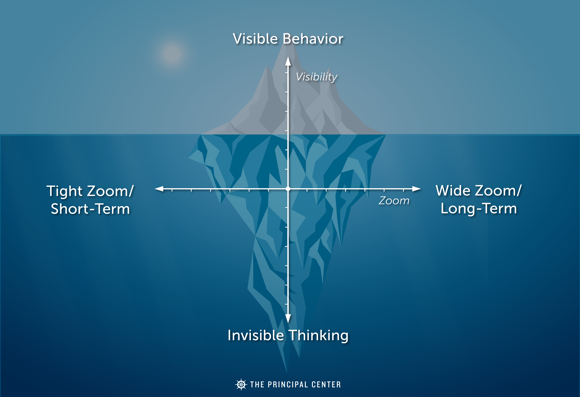| When should teachers use any given instructional practice? If we're going to give feedback about teachers' instructional practices, it's worth asking: When is it appropriate to use a given practice? Under what circumstances? I'm using “practice” to mean professional practice—as in, exercising professional judgment and skill—as well as to mean teaching technique. So some practices are in use all the time—for example, monitoring student comprehension as you teach, or maintaining a learning-focused classroom environment. Other practices are more specific to a particular instructional purpose. For example, if a teacher is trying to help students think critically about a historical event, she might use higher-order questioning techniques, with plenty of wait time. If a teacher is trying to review factual information to prepare students for a test, he might pepper them with lower-level questions, with less wait time. If we're going to use instructional practices for the right instructional purposes, we have to be OK with not seeing them on command. If we insist on seeing the practices we want to see, when we want to see them…we'll get what we want. But it won't be what we really want. It'll be what I call hoop-jumping. Have you ever seen a dog jumping through a hoop? My 5-year-old saw one at a high school talent show the other day, and it blew her mind. The human holds up the hoop, and the dog knows what to do. |

| (And yes, that's actually a pig in the GIF 🙂 Cute, but a terrible metaphor for instructional leadership, right? Teachers aren't trained animals doing tricks. Yet too often, we treat them that way. “Hey everyone, this week I'm going to be visiting classrooms and giving feedback on rigor. I'll be looking for higher-order questions, which—as we learned in our last PD session—are more rigorous.” We show up, ready to “inspect what we expect.” Only, if we haven't thought deeply enough about what it is that we expect, or whether it's appropriate for that moment and the teacher's instructional purpose, or whether it's even observable… Teaching is reduced to jumping through a hoop. Dutifully, most teachers will do it. We'll show up, and teachers will see the hoop. They'll know they need to ask some higher-order questions while we're in the They know what we're hoping to see, so they'll use our pet strategy (see what I did there?). We'll have something to write down and give feedback on, and we'll go away happy—satisfied that we've instructional-leaded* for the day. Yet in reality, we've made things worse. We've wasted teachers' time playing a dumb game—a game in which we pretend to give feedback, and teachers pretend to value it, and we all pretend it's beneficial for student learning. *And no, “instructional-leaded” is not a grammatically correct term. I really hope it doesn't catch on. But when I see dumb practices masquerading as instructional leadership, I feel compelled to give them a conspicuously dumb label. I'm not grumpy—I'm just passionate about this 🙂 All of this foolishness is Last week, I shared some thoughts on observability bias—the idea that instructional leaders tend to oversimplify what teachers are really doing, in We adopt reductive definitions of teacher practice in order to make our lives easier, even if it means giving bad feedback, like “You shouldn't ask so many lower-level questions, because higher-order questions are more rigorous.” So far, we've identified a couple of different factors to consider when observing 1. Zoom—is it something you can observe in a moment, or does it play out over days, weeks, or the entire year? 2. Visibility—is it an observable behavior you can see, or is it really invisible thinking and decision-making? |

| We're calling ^^^ this diagram ^^^ the Evidence of Practice Grid. And now we can add a third factor: 3. Instructional Purpose—under what circumstances is the practice relevant? If we ignore instructional behavior. We'll walk into a classroom and immediately see the practice we're focusing on—not because it fits the instructional purpose, So if you're seeing this kind of behavior, it's worth asking yourself—whenshould teachers what would be good evidence*** that they're using it appropriately and well? ***P.S. And if you're thinking “Well, I'd really have to talk with the teacher to know” then I think we're on the same page 🙂 |
